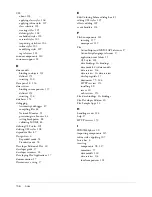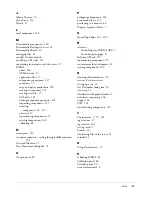
150
Appendix A: Basic Flex Concepts
A container has predefined rules to control the layout of its children, including sizing and
positioning. Flex defines layout rules to simplify the design and implementation of rich internet
applications, while also providing enough flexibility to let you create a diverse set of applications.
One advantage to having predefined layout rules is that your users will soon grow accustomed to
them. That is, by standardizing the rules of user interaction, your users will not have to think
about how to navigate the application, but can instead concentrate on the content that the
application offers.
Another advantage is that you do not have to spend time defining navigation and layout rules as
part of the design process. Instead, you can concentrate on the information that you want to
deliver, and the options that you want to provide for your users, and not worry about
implementing all the details of user action and application response. In this way, Flex provides the
structure that lets you quickly and easily develop an application with a rich set of features and
interactions.
If you do want a greater level of control over sizing and positioning, Flex provides the Canvas
container. This container has no built-in layout rules, but instead lets you explicitly set the
position and size of its children. For more information, see Canvas layout container.
Related topics
•
Chapter 5, “Working with Components,” on page 117
•
Chapter 4, “Building a Flex User Interface Visually,” on page 95
About Flex data bindings
Building a Flex user interface consists not only of inserting containers and components but of
defining event-based, programmatic relationships between the components as well as between the
components and the back-end system. For example, you may want component "A" to pass data to
component "B" when a certain event such as a mouse click is triggered. Flex data bindings let you
define these relationships.
This section covers the following topics:
•
“Data binding in Flex” on page 150
•
“Flex data models” on page 151
•
“Flex data services” on page 152
Data binding in Flex
A data binding copies the value of a property in one object to a property in another object. You
can bind the properties of following objects: Flex components, Flex data models, and Flex data
services.
The object property that provides the data is known as the source property. The object property
that receives the data is known as the destination property.
Summary of Contents for FLEX BUILDER-USING FLEX BUILDER
Page 1: ...Using Flex Builder...
Page 116: ...116 Chapter 4 Building a Flex User Interface Visually...
Page 144: ...144 Chapter 6 Working with Data...
Page 154: ...154 Appendix A Basic Flex Concepts...























